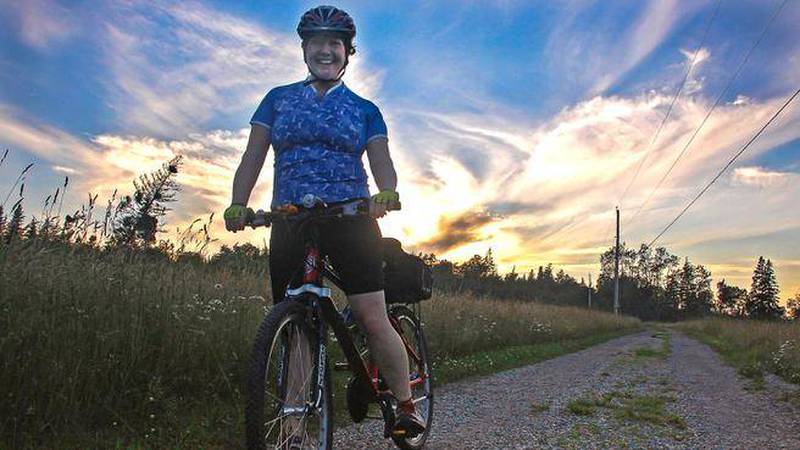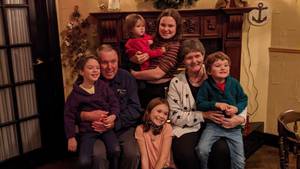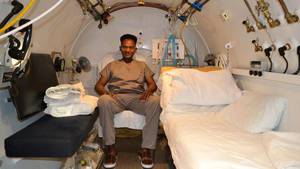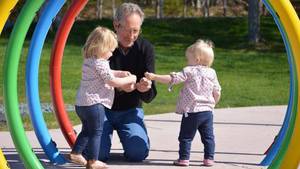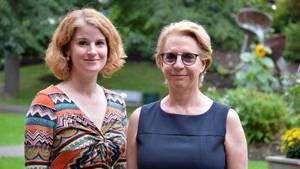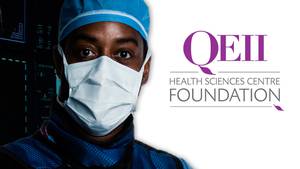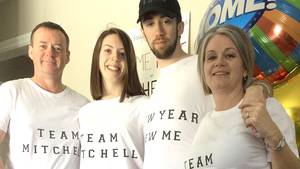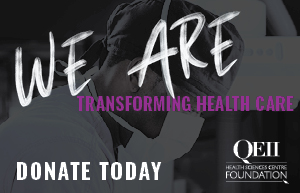In 2011, Jennifer McKinnon was cycling to the gym to meet with her personal trainer: a driver turned left on the same route. When she woke, emergency medical staff were treating her broken body. “It was really confusing. I didn’t know what was going on and I was really scared,” Jennifer says. “I didn’t realize I had a brain injury back then; I was just hurting a lot because I got hit by the car.”
Jennifer couldn’t cook, couldn’t speak properly, and had lost her sense of self-awareness. She wobbled when she walked and found the world suddenly too bright, too loud. Everything just happened. “Remember when you were little and you just reacted to the world around you? You didn’t think about the world – you just reacted to it. That’s how I was that first year.”
Jennifer, an energetic woman eager to continue exploring and contributing to the world around her, expected she would recover and get back to her old life. But after a “sleeping year” of recovery and repeated “crash and burns,” she realized things were different. The team at the QEII Health Sciences Centre’s Acquired Brain Injury Clinic helped her understand her brain injury and how she could recover from it.
“They helped me realize that it was time to look forward, instead of backwards,” she says. “Having medical professionals who understood what a brain injury was, and who could gather the proper information and present it to me very calmly and kindly — that was really helpful.”
Jennifer learned to pace herself. Formerly a spontaneous person, she now lives by the calendar, scheduling downtime to avoid crashing. When she got back on her bike, it was for a short trip in Point Pleasant Park with a vestibular rehabilitation specialist. When she went back to work she did so gradually, with the guidance of her occupational therapists at the Acquired Brain Injury Clinic, making her way to part-time, where she is today.
“Everything is very well maintained and planned, now that I know what to do to prevent a setback,” she says. “For the first three or four years, my symptoms were controlling my life. Whereas now, I understand what to do to keep them from controlling my life.”
Today, Jennifer is adjusting to her new normal. “It’s different now. You have to take from your old life the good things, the useful things, the positive things, and bring those forward with you. Don’t let the rest drag you down,” Jennifer says.
She praises her healthcare team at the QEII for giving her the straight truth. She also praises her employer, Lunenburg’s Bluenose Coastal Action Foundation, who hired her six weeks before the accident, and they’ve stuck by her all this time.
Dr. Anita Mountain, a physiatrist at the Acquired Brain Injury Clinic, says brain injuries produce a “constellation of symptoms,” including fluctuating moods and feeling easily overwhelmed.
“You can get cognitive symptoms such as slower speed of thinking, feeling like you’re in a fog, feeling fatigued, and difficulty with memory. You can also get physical symptoms – headaches, difficulty sleeping, difficulty with balance or vision,” Dr. Mountain says.
Most patients they see have suffered brain injuries in accidents, falls, strokes or brain infections, and are referred to the clinic by a family doctor or other healthcare professional. For the outpatient day program, people must be 16, able to join group settings, and be medically stable. It introduces patients to the range of services the QEII offers and the impact of a brain injury. After that, patients join theme-based groups called Series. They run twice a week for six weeks and help patients learn strategies for dealing with life after a brain injury.
The outreach program offers similar care, but in the community. It gives support to the family of the patient, too. Patients in this group also need a referral from a healthcare provider.
The overarching goal is to treat what can be treated with therapies and medications, and cope with the rest. “In rehabilitation, that’s what it’s all about: trying to help people achieve their maximum level of function,” Dr. Mountain says.
“One of the hard things people struggle with in a brain injury is that it’s often invisible; and so, without any obvious physical impairments, it can be a hidden thing. They look like they should be fine, and yet they are not. Our brain is really what makes us, us.”
Jennifer agrees — and she’s still herself. “I have the same hope and joy and dreams that I had before, but I’m going to have to do them a lot differently now.”

